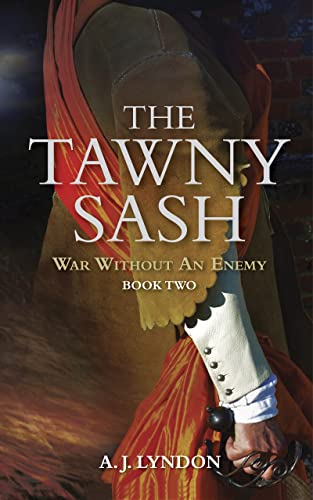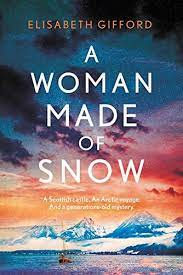Title: The Tawny Sash, War Without an Enemy, Book Two
Author: A.J. Lyndon
Publisher: Tretower Publishing, 30 May 2023
The Tawny Sash is A.J. Lyndon’s second book in a series called War Without an Enemy. The first book, The Welsh Linnet, was published in 2017. The review copy was provided by the author, a member of Ballarat Writers.
The English Civil War is a term coined to cover a series of wars between the Parliamentarians and the Royalists in England and Wales between 1642 and 1651. The ongoing dispute revolved around the acquisition of the power to rule England, Scotland, and Wales. The ugly battles mainly occurred in Cornwall and Wales, however the Scots marched south to join the Parliamentarians’ cause.
Set in 1644, the story gallops along, describing in colourful detail the battlefield scenes and the complicated lives of characters Will Lucie and Gabriel Vaughan. The families are intertwined. Gabriel Vaughan is married to Will’s sister, Bess Lucie, whose marriage was against the wishes of her father, Sir Henry Lucie. Gabriel and Will end up fighting on opposite sides. Sir Henry seeks both men for different betrayals and is threatening them with court martial. They are both desperate to prove their innocence.
The book is structured well and the location of the story within the chapters is clearly identified at the start, which assists in following the battles and the strategies of the two armies. The settings are of particular interest to readers who know Cornwall and Wales, have familiarity with the region and appreciate the historical significance of some locations.
There is a raft of characters besides the main protagonists, which can be a bit overwhelming at times, but the central focus on Gabriel, Will, Sir Henry and Bess is clear and drives the plot. The battle descriptions are daunting and bloody, but the author has a clever knack of not prolonging the hideous detail before moving the narrative forward.
@ goodreads
This is not a feminist novel in any aspect but the portrayal of women in the 1600s is, I suspect, accurate. There exists a big opportunity for more reflection on the female characters — the engaging Bess and enigmatic Hephzibah — perhaps in the third book!
A most enjoyable aspect of The Tawny Sash is the wonderful description of the clothes and uniforms, including personal weaponry of the era. The fabulous cover displays a taste of what is to come within the pages. Terminology and the use of language is excellent. Old sayings that have changed over time, such as ‘have a care’, now known as ‘take care’, add authenticity.
A.J. Lyndon clearly is a fine historian and researcher. The amount of detail and knowledge on display within this novel is to be appreciated. A recommended read for people who love war history combined with historical fiction.
Reviewed by: Heather Whitford Roche
Ballarat Writers Inc. Book Review Group, June 2023
Review copy provided by the author

